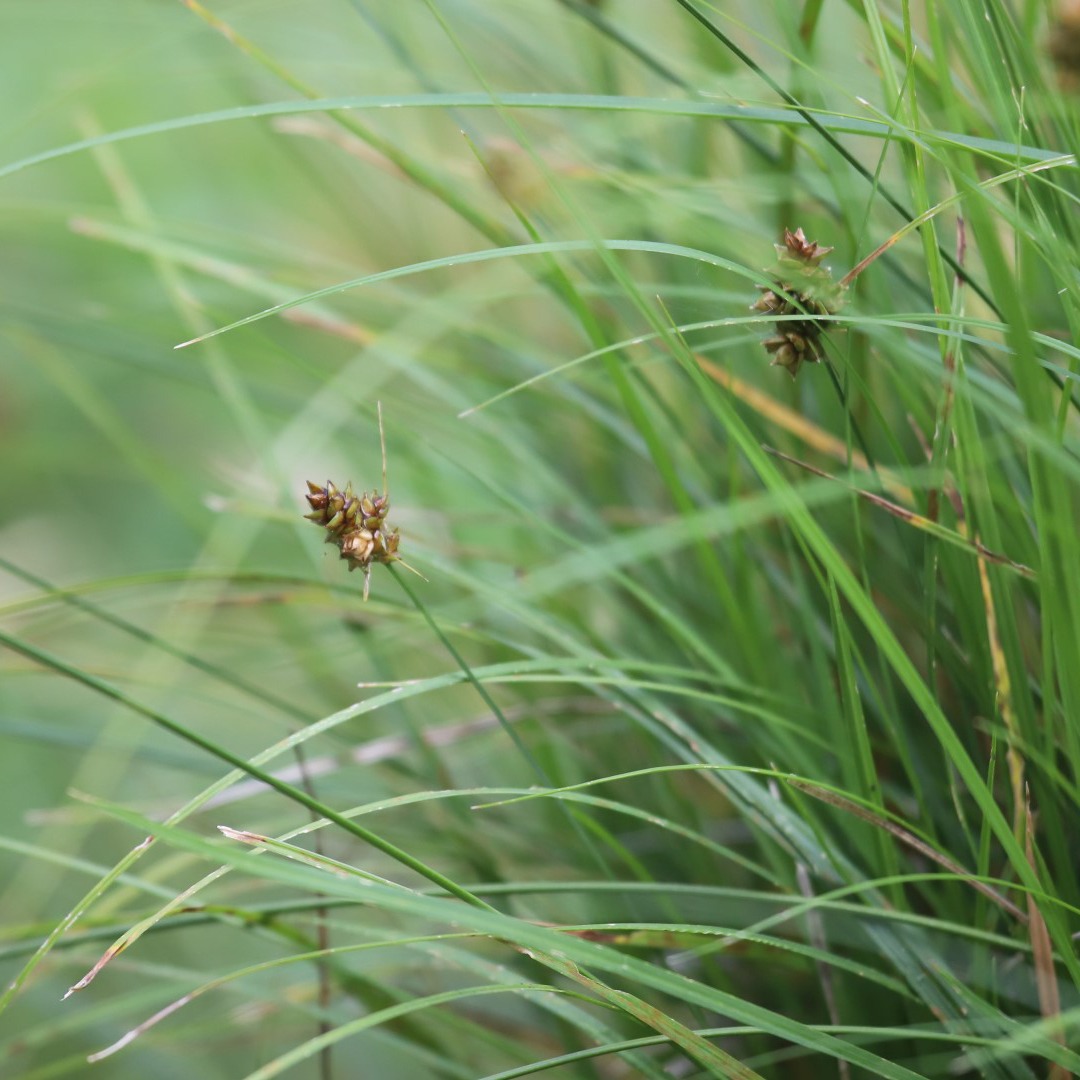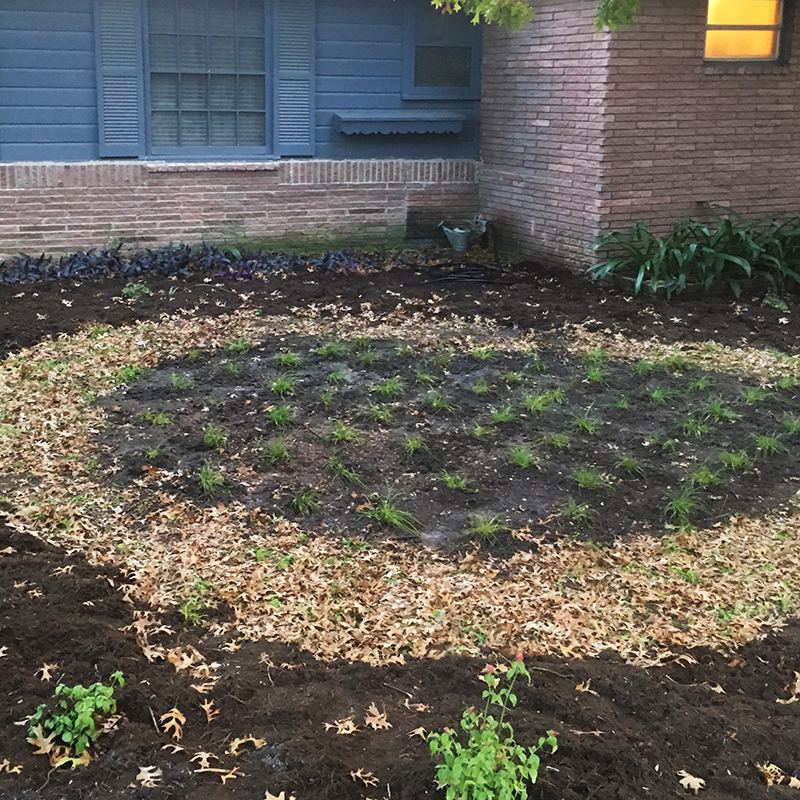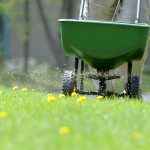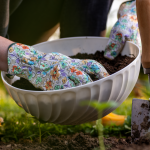Aside from being naturally evergreen, disease resistant and shade-loving, sedge is deer resistant, and (most importantly) drought hardy.
Are y’all tired of buying new sod to fill in a shady spot only to have to do it all again in a few years? Or maybe your entire yard is one big shady spot that grows only rocks and bare soil? Sedges could be the answer.
While superficially similar to some grasses, sedges are actually in their own plant family — and some of their differences make them useful lawn alternatives.
 The most common native sedge species found in the nursery trade is Carex perdentata, sometimes sold as Webberville sedge. Also called meadow sedge or turf sedge, it’s a low-growing and mostly evergreen clump-forming plant, superficially similar to mondo grass. Over time the clumps can spread to form a groundcover of dark green leaves. They don’t fill in the way a traditional turfgrass would. Rather their long thin leaves flop over, creating a distinctive meadowlike texture. More at home in partial shade (especially afternoon shade) meadow sedge can even grow under live oak trees where other ground covers, like turf grasses, tend to struggle.
The most common native sedge species found in the nursery trade is Carex perdentata, sometimes sold as Webberville sedge. Also called meadow sedge or turf sedge, it’s a low-growing and mostly evergreen clump-forming plant, superficially similar to mondo grass. Over time the clumps can spread to form a groundcover of dark green leaves. They don’t fill in the way a traditional turfgrass would. Rather their long thin leaves flop over, creating a distinctive meadowlike texture. More at home in partial shade (especially afternoon shade) meadow sedge can even grow under live oak trees where other ground covers, like turf grasses, tend to struggle.
Like many native grasses, sedges are best for areas without heavy foot traffic. Think in terms of small lawns or lilypads among your WaterSaver landscape beds. Sedge is slower growing than traditional grasses in summer, but once established, it reseeds to fill in and doesn’t require much, if any additional water from you. It does most of its growing and flowering in spring and early summer. It can grow bigger and faster in sun, but in full sun it may look tired or go dormant (brown) in summer scorch.
 Establishing a sedge meadow is a bit different than establishing a grass sod. Plants will typically be planted on a 12-inch grid or staggered 12-inch lines about 10 inches apart. To find meadow sedge, your best bet is to check nurseries specializing in native plants and look for them in 4-inch pots. (The smaller size is more economical and smaller plants will be easier to get established.) Over time they’ll fill in the gaps by growing large and reproducing by seed.
Establishing a sedge meadow is a bit different than establishing a grass sod. Plants will typically be planted on a 12-inch grid or staggered 12-inch lines about 10 inches apart. To find meadow sedge, your best bet is to check nurseries specializing in native plants and look for them in 4-inch pots. (The smaller size is more economical and smaller plants will be easier to get established.) Over time they’ll fill in the gaps by growing large and reproducing by seed.
Shearing or lightly mowing on the highest setting once or twice a year can encourage plants to spread out horizontally, but mowing is not necessary. In fact, one of the bonuses of a sedge groundcover is less maintenance requirements all around.
Let it grow naturally and it will take on a soft “mounded” look. The flowering stalks in spring are typically the tallest part of the plant, but they aren’t dense and often grow out horizontally instead of up.
Other notable native sedges include Carex texensis, Carex blanda, Carex cherokeensis and Carex planostachys. Many of these beneficial sedges may already be present as wild plants in or around your landscape.
So, if you’re looking for a groundcover for a dry shady spot, or you’re tired of watering, mowing and maintaining a large lawn area (or you’re just interested in using native plants wherever you can) consider making a switch to sedge. With its low water needs, irrigation is not needed and could be discontinued or removed altogether!
And remember to give us a call for a free irrigation consultation and rebate offer.




